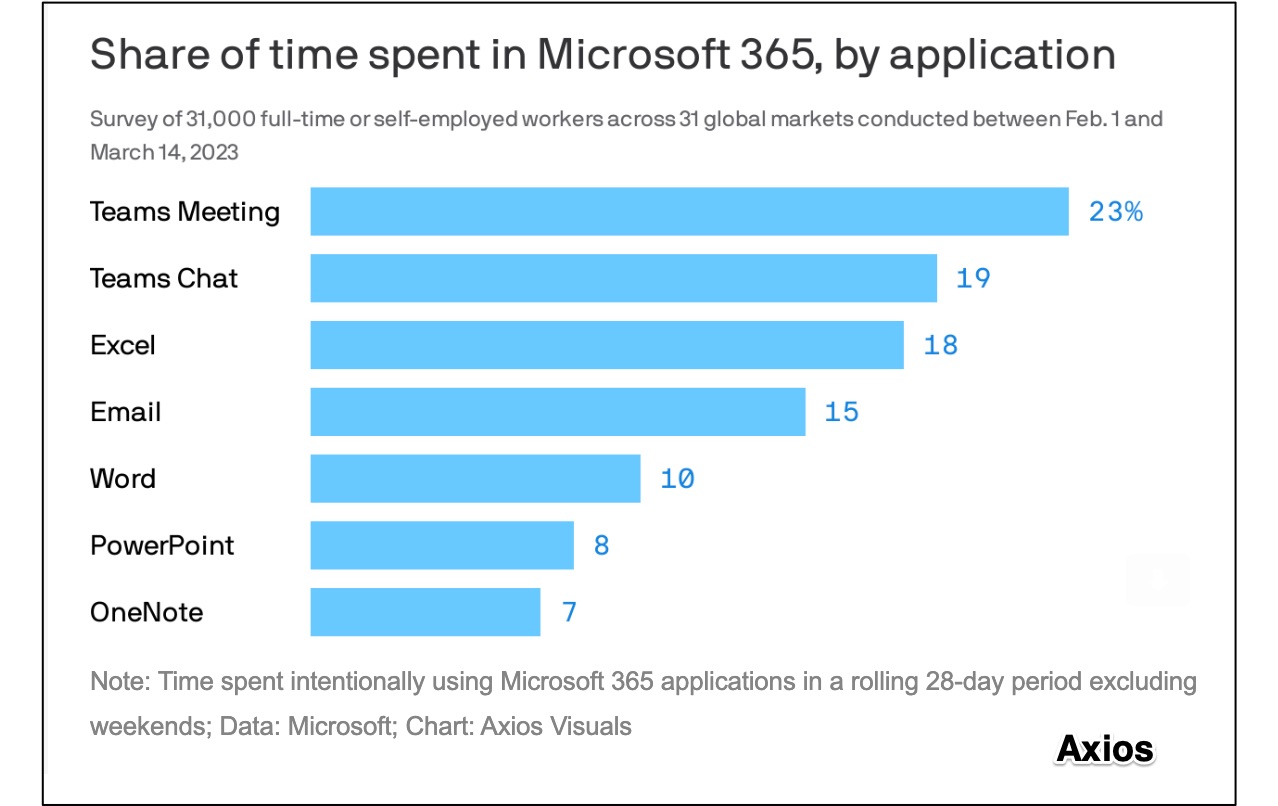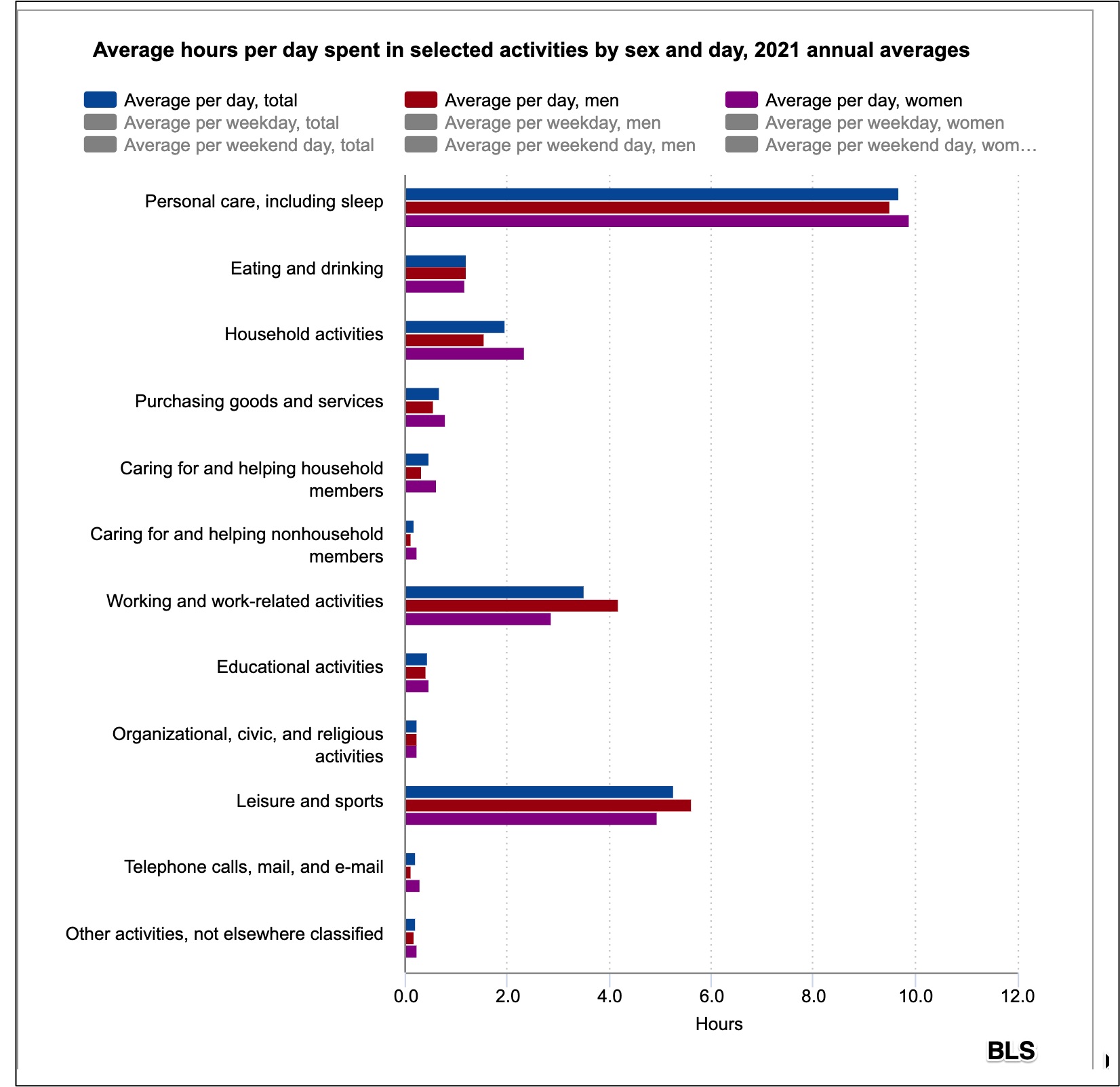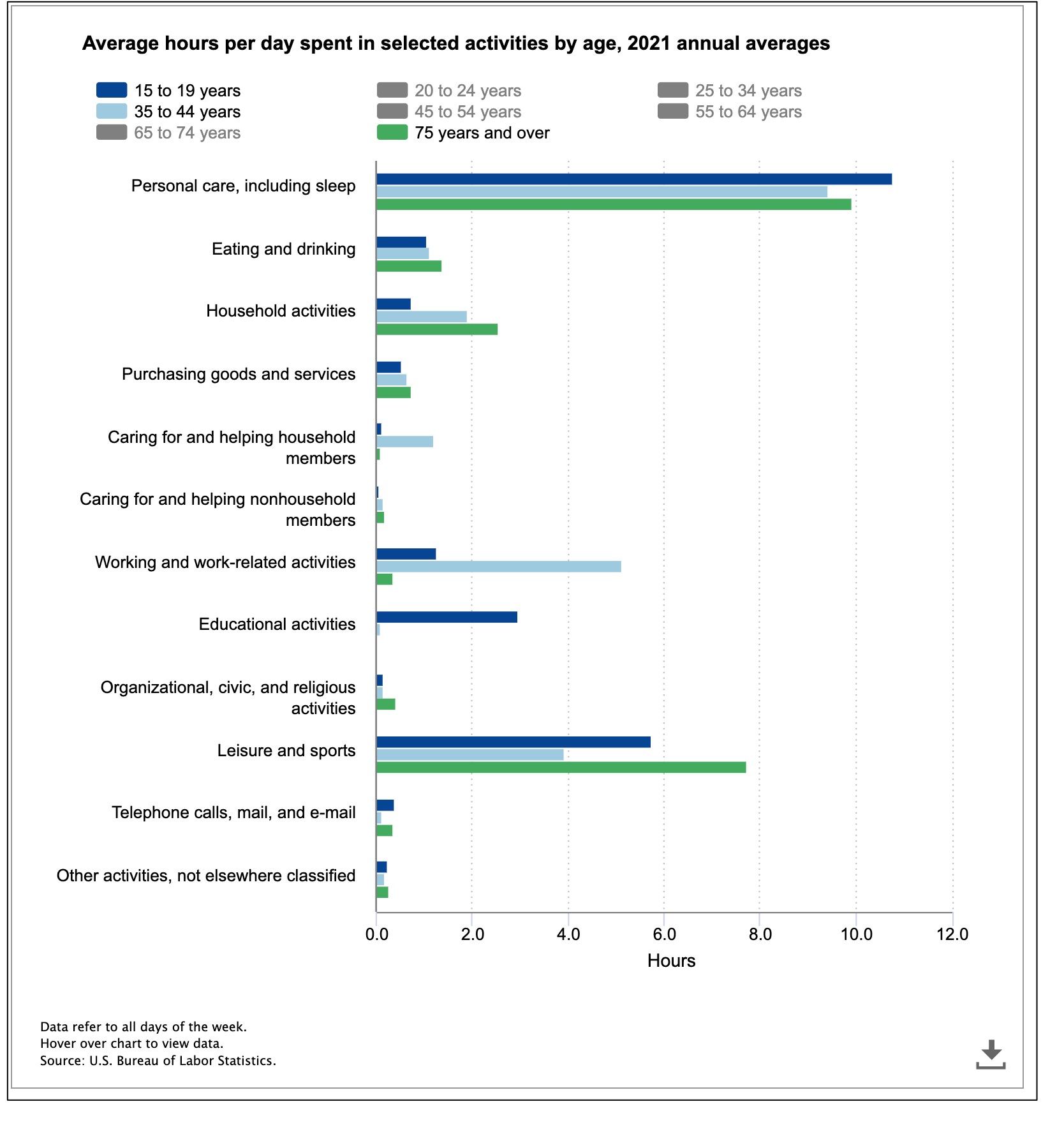
What We Can Learn From a Banana
May 9, 2023Why We Moved Back With Mom (and Dad)
May 11, 2023Focusing on work, a recent Microsoft study told us how we use our time:

But of course there is so much more…
Our Time Use
Per Life
When we see our lives as a box of jelly beans, 79 years would equal 28,835. So yes, after the first year, we’ve used up 365. Then, setting aside 8,477 jelly beans for sleeping, we still have thousands left for work, preparing our meals, and, in 2013, watching TV.
Do take a look at this 2013 jelly bean video to see how we used to allocate the hours of our lives. It uses data from the annual BLS (Bureau of Labor Statistics) American Time Use Survey (ATUS):
Per Day for Women and Men
And here is the most recent American Time Use Survey (ATUS) from June 2022. With women’s time use displayed by the bottom violet bar, there are no surprises. Women devote more time to household activities (2.33 hours a day) and caring for household members (.62 hours a day). Meanwhile, the men have more leisure time (5.61 hours a day):

Per Day by Age
Below I’ve compared a younger cohort that is 15 to 19 years old, a middle group 35-44 years old and then grandma and grandpa. To judge hours devoted to each activity, you can compare the longest blue bar, at 10.78 hours for personal care, to all of the others:

Our Bottom Line: Opportunity Cost
Time use decisions always require a sacrifice. Called opportunity cost, choosing is refusing the next best alternative. When you eat pizza for lunch, you might have refused a salad. Watching a video could mean you did not talk on the phone. And picking up a penny prevents you from using those seconds for something else:
My sources and more: For some extra detail, do take a look at this ATUS summary. An interesting complement, this Microsoft report came out yesterday. But for a brief look, you might go to the Axios summary oin their daily email. Please note that parts from today include sections of previous econlife posts.)
![econlifelogotrademarkedwebsitelogo[1]](/wp-content/uploads/2024/05/econlifelogotrademarkedwebsitelogo1.png#100878)





